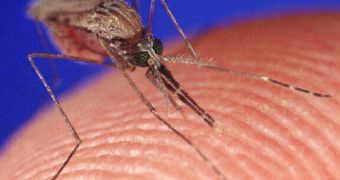Injections are no fun, regardless of what some might say, but that could soon change with the invention of the painless 'microneedle', a device that works much in the same way as the needle of mosquitoes while sucking blood. In the case of the aforementioned insects, the whole process consists of blood being drawn into the mouthparts of the mosquito as the muscles of its proboscis flex and relax thus creating negative pressure.
The biocompatible microneedle is about 60 microns across, has a 25 micron inner diameter, is roughly the size of the mouthpart of the mosquito, and produces suction with the help of a microelectromechanical pump based on a piezoelectric actuator. By contrast, the diameter of the needle of current syringes is about 900 microns across.
The device was invented by Suman Chakraborty of the Indian Institute of Technology and Kazuyoshi Tsuchiya of Tokai University, and it's not only incredibly small, but it can also deliver drugs or draw blood painlessly, another similarity to the mouthpart of the mosquito. Contrary to general belief, the bite of the mosquito does not hurt; the pain is caused by the anticoagulant saliva injected into the body to stop the blood from clotting.
The new device is made out of strong titanium alloys, thus minimizing the risk of breaking during the injection, and can penetrate as much as 3 millimeters into the skin, reaching the capillary blood vessels. Due to its small size, capillary flow is made possible, allowing blood to draw into the needle by itself. It can extract a maximum volume of 5 microlitres of blood per second, meaning that it could be used in the future to create wristwatch glucose sensors to measure the blood-sugar levels in diabetics.
"The working principle of this device follows on from our discovery that in a well-designed microneedle, surface tension forces may overcome resistance from friction and draw up blood with unprecedented efficiency," Chakraborty said. The microneedle is driven into the skin with the help of a shape-memory alloy, while the micro-pump of the device ensures that drugs can be easily injected into the capillary blood vessels, which could one day allow the microneedle to be used in delivering insulin to diabetics. "This new blood extraction is interesting, but I question its ability to be fabricated and initialized en masse," said Geoffrey Thomas of the University of Calgary, who is working on a similar device.

 14 DAY TRIAL //
14 DAY TRIAL //